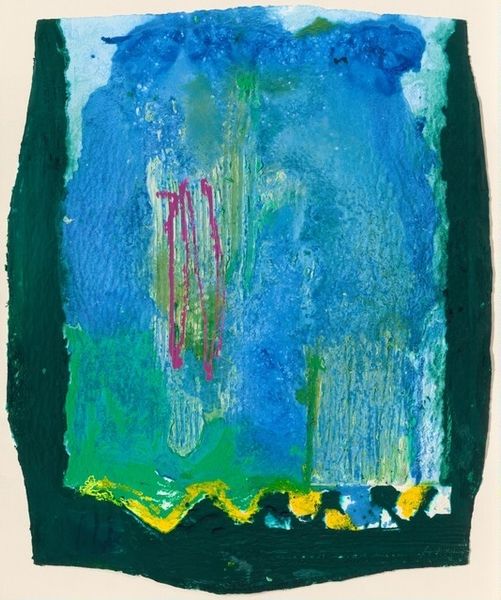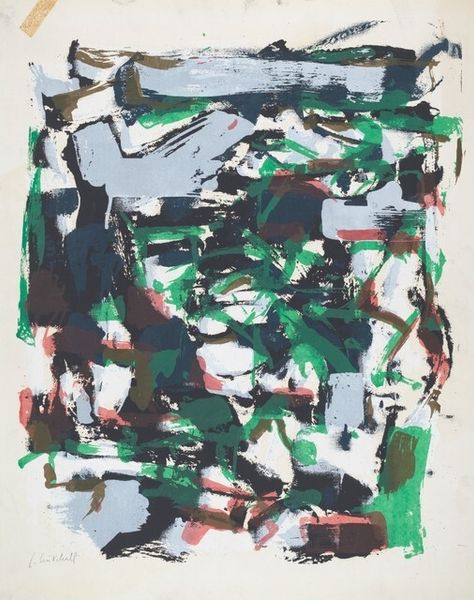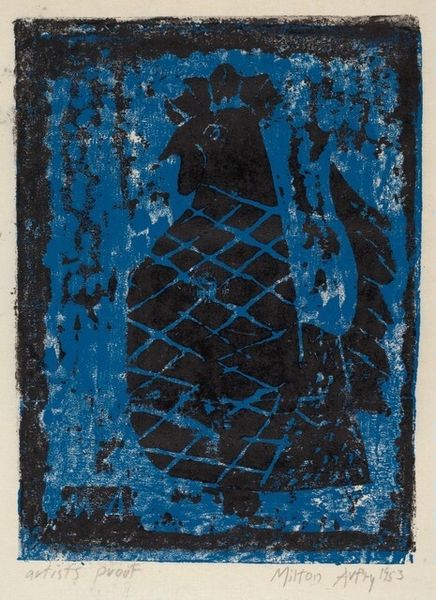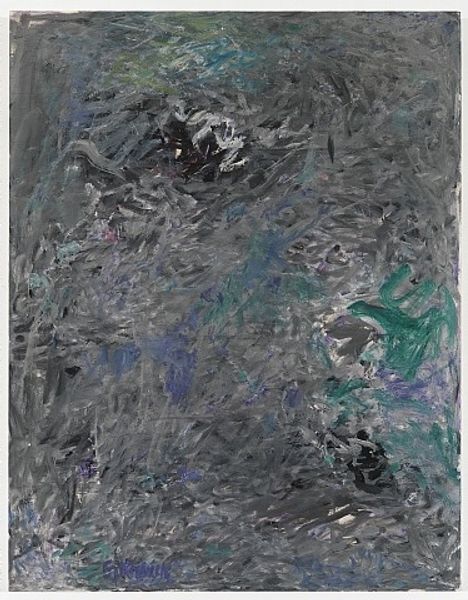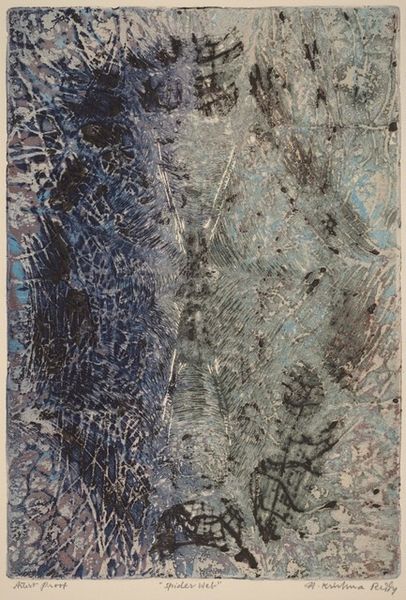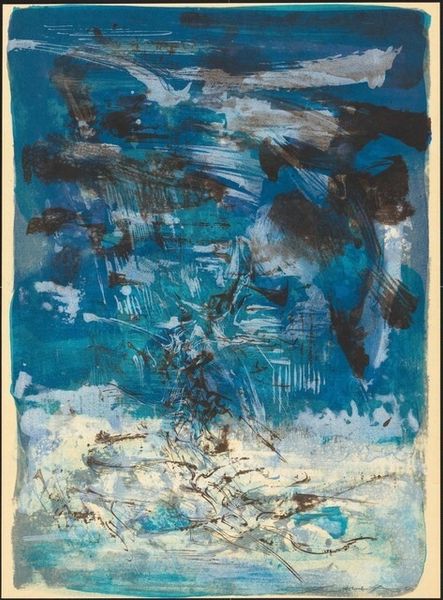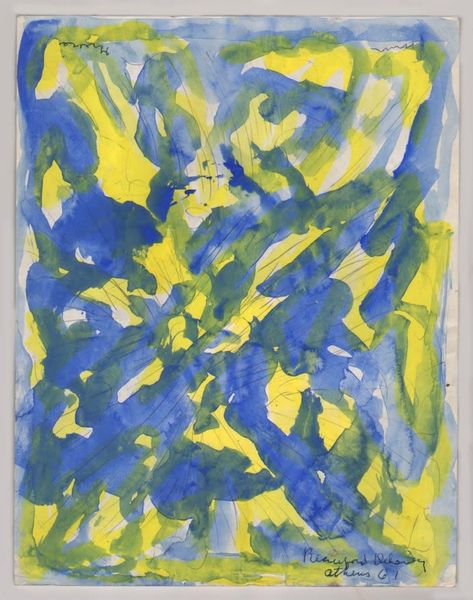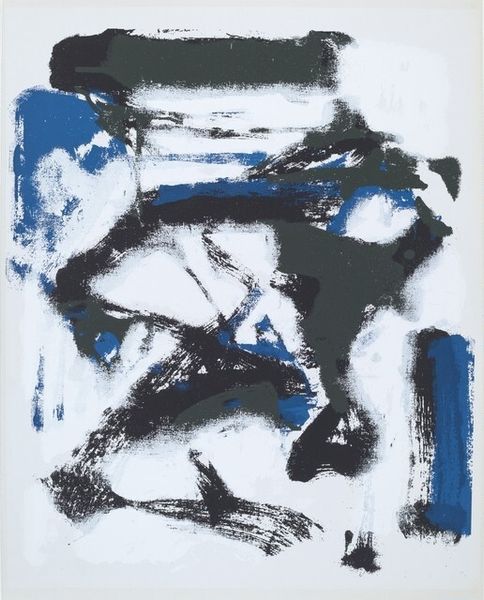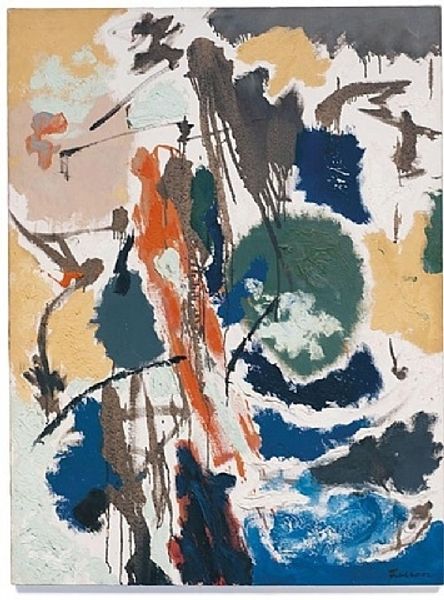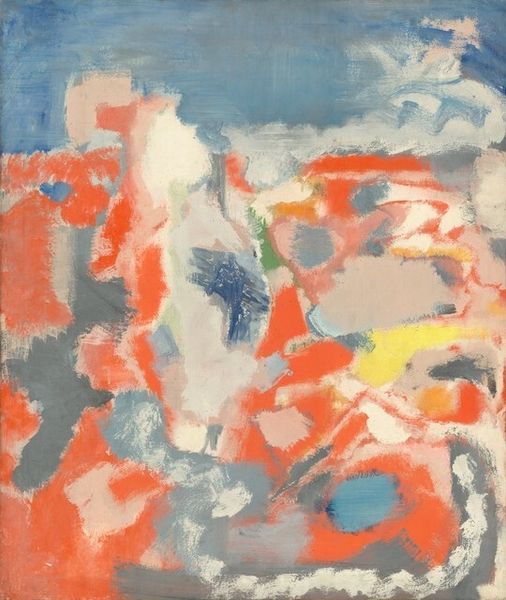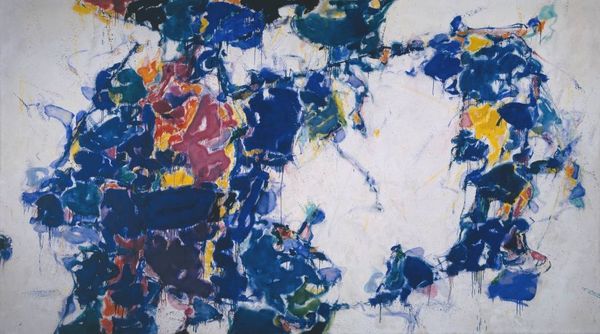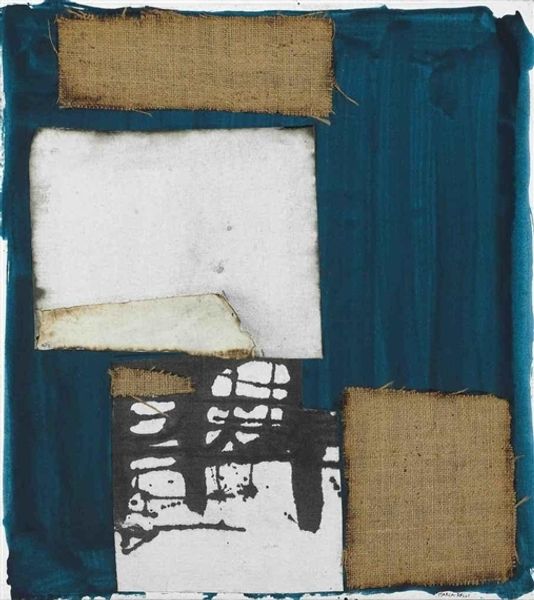
painting, acrylic-paint, gestural-painting
#
abstract-expressionism
#
abstract expressionism
#
painting
#
acrylic-paint
#
gestural-painting
#
acrylic on canvas
#
abstraction
#
modernism
Copyright: 2012 Sam Francis Foundation, California / Artists Rights Society (ARS), NY
Editor: So here we have Sam Francis' "Deep Blue and Black" from 1955. It’s an acrylic on canvas, and when I look at it, I immediately feel this sense of immense depth and almost a turbulent emotional state, even a storm brewing, if that makes sense. What kind of symbols or emotional resonance do you see in a piece like this? Curator: It's interesting you perceive turbulence. Blue, of course, carries centuries of symbolic weight. Traditionally linked to the Virgin Mary, evoking concepts like purity, hope, and heaven. But here, fractured and deepened by black, those associations become troubled, almost as if those traditionally safe values are now threatened, in flux. Do you see hints of figuration, something emerging from the chaos? Editor: Now that you mention it, in the blue section I can imagine water but perhaps I am making that up! It certainly gives a sensation of being in the deep sea and almost drowning. What would those threatening or troubling associations refer to, in 1955? Curator: That period marks the beginning of the Cold War anxieties. But also Abstract Expressionism's focus on subjective experience. So the 'threat' might be less concrete and more about existential fears seeping into the collective psyche. How do the drips and splatters of the acrylic speak to you? Editor: They create a sense of urgency and, ironically, fragility. It feels like whatever form is present is dissolving. They undermine any static meaning, actually. It makes the artwork feel far less authoritative somehow. Curator: Precisely. The lack of central focus undermines traditional hierarchies. So the overall effect makes it ripe for reflecting whatever the viewer may bring. We see what our subconscious projects onto the work, filtered through art history’s lens. Editor: I didn't consider that connection before, thank you for explaining it. This certainly prompts much self-reflection! Curator: It’s in these visual cues where memory and emotion become entwined. And it's in these connections that art truly begins to speak.
Comments
No comments
Be the first to comment and join the conversation on the ultimate creative platform.
